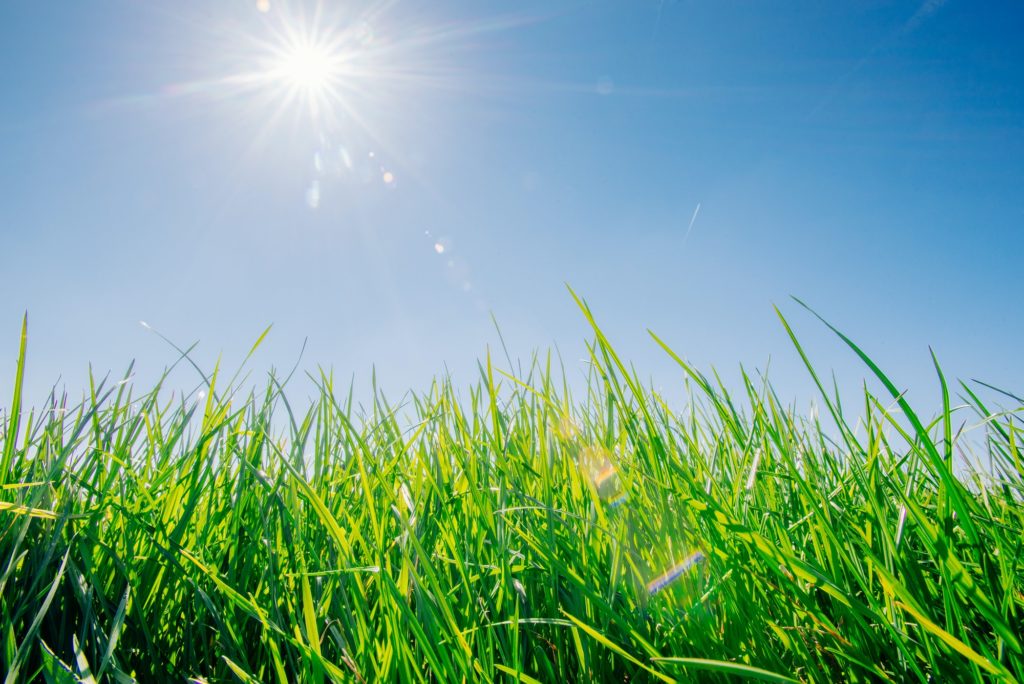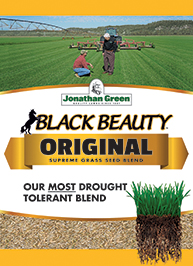
Most people might think of Spring as the best time to start a new lawn, but the truth is that late Summer and early Fall are far better for starting a new lawn from seed. Any time after August 15th is prime lawn time; the warm soil in combination with cooler air temperatures will encourage far better seed germination. Weeds are also typically not as aggressive late in the season, so grass seedlings don’t have to compete for nutrients.
Early Spring is the second-best time to start a lawn from seed, but it has some drawbacks: the young grass has less time to become established before the hot weather of summer sets in, and the results can be generally unsatisfactory. You’ll usually end up having to assess your lawn again anyway in the late Summer and Fall and then over-seed where it did not grow as well.
PREPARE YOUR SOIL
Regardless of when you install your new lawn from seed, the soil preparation is the same. Here is the step by step process:
- If more than 70% of your area is weeds and bare spots you may want to apply a broad spectrum weed killer like Bonide Kleenup to kill what is there. Apply according to the directions, and be patient. In 7-10 days you should be able to install the lawn by seed safely.
If you prefer not to apply a weed killer, use a rototiller, spade, or rent a sod cutting machine to remove any of the living matter. - Turn the soil to a minimum depth of 4″.
- Remove sticks, stones, roots and other debris that could interfere with the establishment of the grass seedlings.
- Take a soil test sample to determine the soil pH. Having the correct pH allows fertilizers to be more effective and your lawn will look healthier longer. Once you know the pH you can amend the soil with lime using a spreader. The products which we recommend are Rapid Lime, MAG-I-CAL or Pelletized Lime.
- Incorporate organic material into the soil, such as compost, manures, peat moss, etc.
- Use a fertilizer spreader to apply Jonathan Green Love Your Lawn and New Seeding Fertilizer at the recommended rates.
- Grade the soil by raking and pitching the land so proper drainage will occur. Here’s a good trick: lightly water the area in order to see where puddles tend to form. Lightly rake the high spots into the low spots. Roll or slightly compact the soil making sure air pockets are removed from the soil.
You are now ready to install your grass seed.
SEEDING
 Select the appropriate grass seed based on the amount of sunlight in the area during the growing season. Jonathan Green has developed blends that can grow in sun or shade. A Sunny blend will need at least 6 hours of sun in order to thrive, while shady blends can live in sun or shade. We recommend Jonathan Green’s Black Beauty seed blend for a lush green lawn with improved drought and disease resistance.
Select the appropriate grass seed based on the amount of sunlight in the area during the growing season. Jonathan Green has developed blends that can grow in sun or shade. A Sunny blend will need at least 6 hours of sun in order to thrive, while shady blends can live in sun or shade. We recommend Jonathan Green’s Black Beauty seed blend for a lush green lawn with improved drought and disease resistance.
- Apply the seed with a spreader for best results. After seeding, use the backside of a spring rake to help to distribute the seed evenly and smooth off the surface.
- To help ensure the overall seed germination, apply Hydretain to the entire area. Hydretain will draw water molecules from the soil and bring them into the root zone.
- Next apply Straw, Jonathan Green Mulch, or seed blanket to the newly seeded area. This prevents the seeds from drying out as quickly.
- For the first two weeks, water the seed at least once a day for 5 to 10 minutes, right up until germination begins. If the soil is moist you can hold off until it dries out slightly.
- Once the grass begins to germinate, you should switch to watering for 20-30 minutes every 2nd or 3rd day.
- Mow the lawn once it is 2-3” high and make sure your mower blades are clean and sharp.
- Once your new lawn is established you can maintain your lawn with an annual lawn care program.







